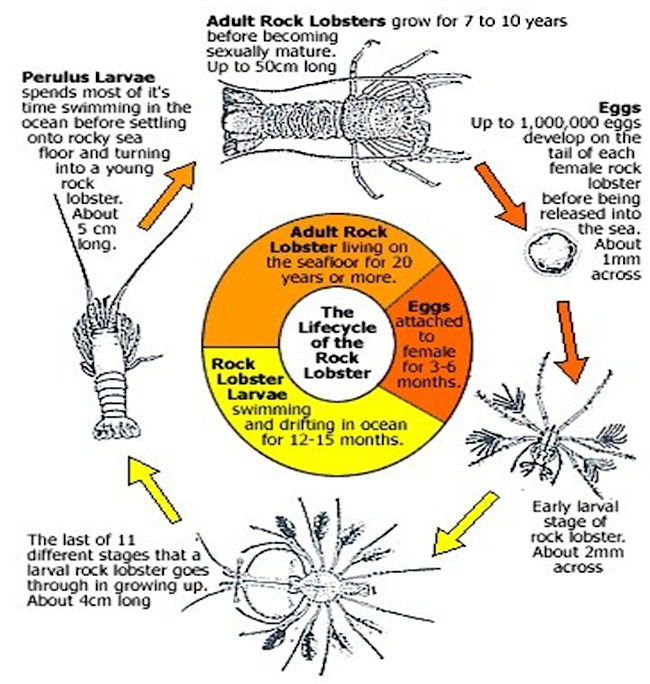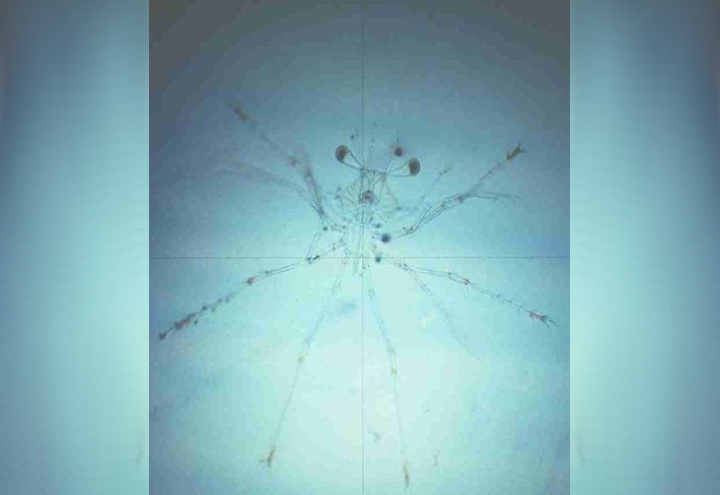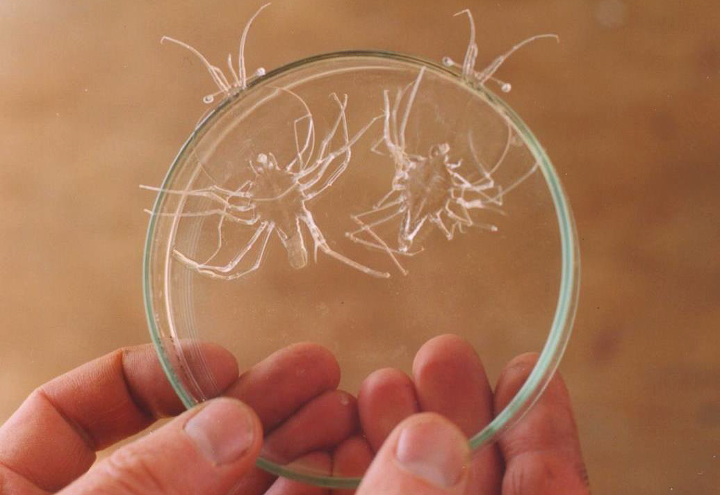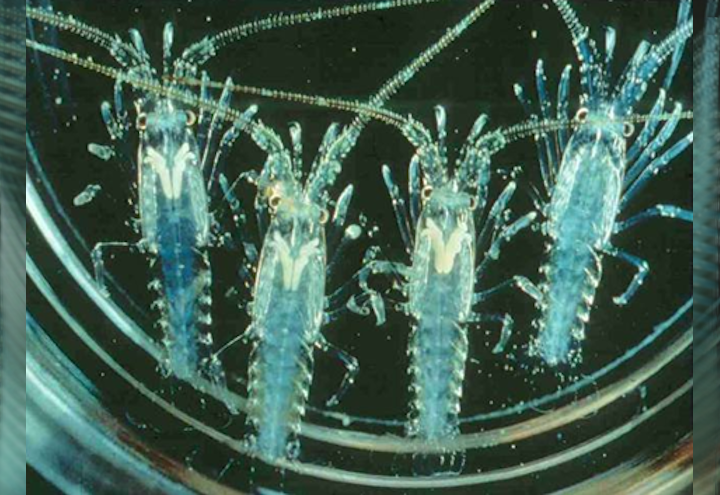Red rock lobster life cycle
Lobsters have a long and complex life cycle.
- Adults mate and the females carry eggs (berries) for 3-5 months
- Larvae hatch and swim in the open ocean for 18-24 months, during which they undergo numerous moults and changes (11 phyllosoma stages)
- The puerulus stage settles and moults into the juvenile stage
- Juveniles mature and become adults after 4-5 years.

Hatching
Hatching occurs at daybreak during the spring.

These larvae will drift in the water for 12 -15 months, growing through many stages to around 50 mm in length before returning to inshore areas to settle on the seafloor.
Larval stages
Naupliosoma larvae swim up to the light and within minutes moult into the transparent second stage Phyllosoma larva (left image below). This small spider like creature has a body about 2 mm in length.

The phyllosoma stages are carried seaward by ocean currents and spend the next 18-24 months growing through 11 phyllosoma stages, and drifting up to 1,000 km from the New Zealand coastline. The long larval life and poor swimming of the phyllosomas mean that they get carried about by currents and caught up in eddies.
When they reach about 35-50 mm, the phyllosomas are leaf-shaped.

At this point they metamorphose into the Puerulus stage.

Pueruli look like small (25 mm) transparent juvenile lobsters. During this stage they do not feed, but instead survive on fat stores laid down by the phyllosoma stages.
Pueruli are good swimmers and can swim up to 150 km to reach the shore.
Settlement and the juvenile stage
Pueruli that successfully reach the shore settle into small holes and crevices on shallow reefs. Within 2-3 weeks the pueruli moult into the juvenile stage and start to feed. Juveniles mature and become adults after 4-5 years.
In spring and early summer some juveniles migrate against the prevailing current. It is believed these migrations help counter the effect of downstream larval drift. Adult lobsters undertake seasonal inshore-offshore movements associated with moulting, breeding and feeding.
